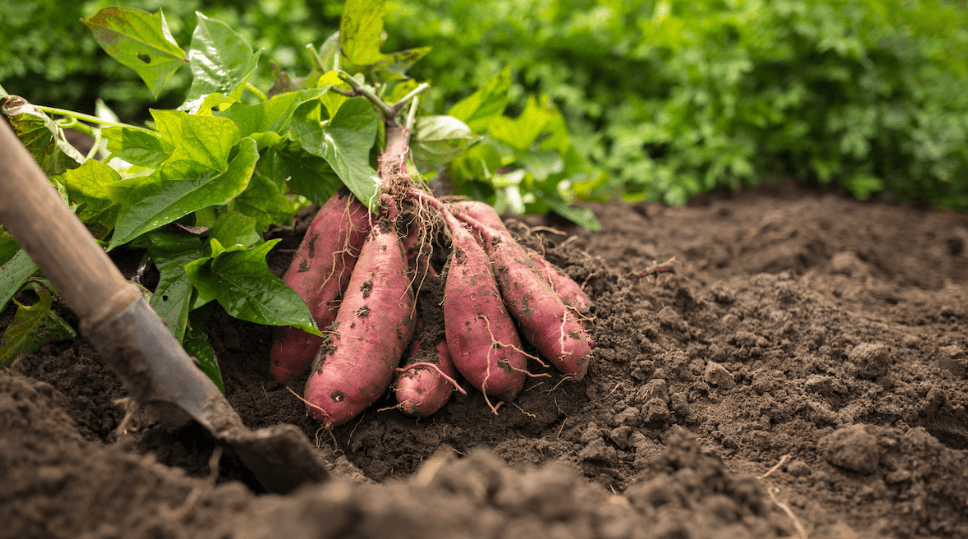
Companion Plant for Sweet Potato: Secrets to a Thriving Garden
When cultivating sweet potatoes, selecting the right companion plant for sweet potato is crucial for creating a thriving garden. Companion planting not only enhances growth but also improves soil health, pest control, and overall garden productivity. This guide explores the best companion plants for sweet potatoes and provides practical tips for successful planting.
Table of Contents
ToggleUnderstanding Companion Planting
A. What is Companion Planting?
Companion planting is the practice of planting different types of plants together in a way that benefits each other. This can include improving soil fertility, repelling pests, and maximizing space and resources. When done effectively, companion planting can promote healthier and more productive gardens.
B. Benefits of Companion Planting
Companion planting offers a range of benefits for gardeners. By planting certain plants together, you can encourage natural pest control, enhance soil health, improve pollination, and maximize space and yields. Additionally, companion planting can create a more diverse and balanced ecosystem, ultimately leading to healthier and more vibrant gardens.
Best Companion Plants for Sweet Potatoes
A. Nitrogen-Fixing Plants
Some of the best companion plants for sweet potatoes are nitrogen-fixing plants such as legumes like peas and beans. These plants help improve soil fertility by adding nitrogen to the soil, which is essential for the growth of sweet potatoes. Additionally, plants like marigolds, which repel pests, can be beneficial companions for sweet potatoes as well. When choosing companion plants for sweet potatoes, it’s important to consider their compatibility and the benefits they can provide in terms of soil fertility, pest control, and maximizing space and resources.
1. Beans and Peas
Beans and peas are excellent companions for sweet potatoes because they are nitrogen-fixing plants, which means they help improve soil fertility by adding nitrogen to the soil. This is essential for the growth of sweet potatoes. Additionally, these plants can also help maximize space and yields in the garden. In addition to beans and peas, plants like marigolds, which repel pests, can also be beneficial companions for sweet potatoes. When choosing companion plants for sweet potatoes, it’s important to consider their compatibility and the benefits they can provide in terms of soil fertility, pest control, and maximizing space and resources.
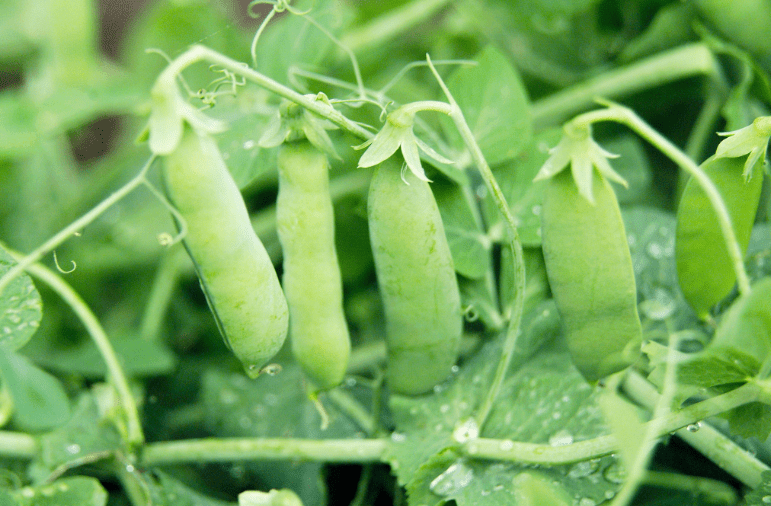
B. Herbs
Herbs like thyme, oregano, and rosemary are great companion plants for sweet potatoes because they can help repel pests and attract beneficial insects. They also have shallow root systems, which minimizes competition for water and nutrients in the soil, allowing the sweet potatoes to thrive. Herbs also add diversity to the garden and can provide additional culinary benefits. When choosing companion plants for sweet potatoes, it’s important to consider their compatibility and the benefits they can provide in terms of soil fertility, pest control, and maximizing space and resources.
1. Thyme, Dill, and Basil
Thyme, Dill, and Basil are all great choices for companion plants for sweet potatoes. Thyme and dill can help repel pests, while basil can attract beneficial insects and also enhance the flavor of the sweet potatoes when used in cooking. These herbs have shallow root systems, which means they won’t compete with the sweet potatoes for nutrients and water in the soil. Overall, incorporating herbs into your sweet potato garden can provide multiple benefits for both the plants and for your culinary endeavors.
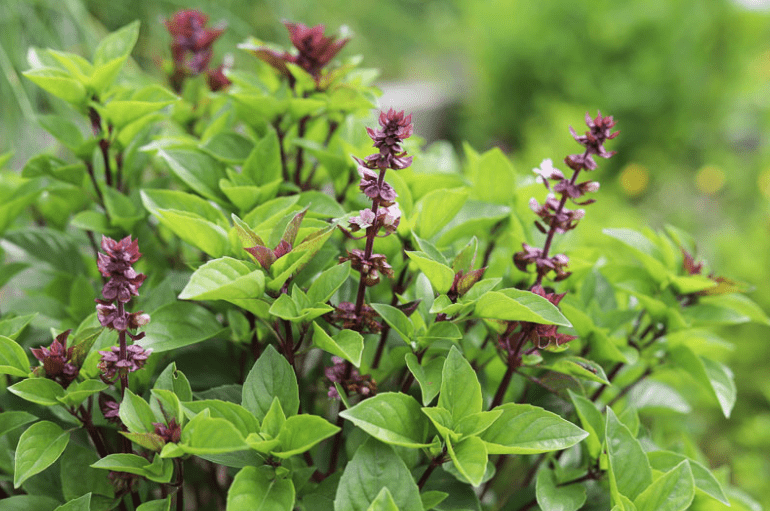
C. Flowers
Such as marigolds and nasturtiums, are also great companion plants for sweet potatoes. Marigolds can help repel nematodes, while nasturtiums can attract predatory insects that can help control pests. Additionally, both of these flowers can add visual interest and beauty to the garden. When choosing companion plants for sweet potatoes, it’s important to consider the overall health and productivity of the garden, and incorporating herbs and flowers can contribute to a more diverse and beneficial growing environment.
D.Other Vegetables
1. Corn and Spinach
Corn and spinach can also make great companion plants for sweet potatoes. Corn can provide shade and support for the sprawling vines of sweet potatoes, while spinach can help to suppress weeds and conserve moisture in the soil. These vegetables can work together to create a more efficient and productive garden, while also adding a variety of different flavors and nutrients to your meals. Overall, integrating other vegetables into your sweet potato garden can contribute to a more balanced and thriving growing environment.
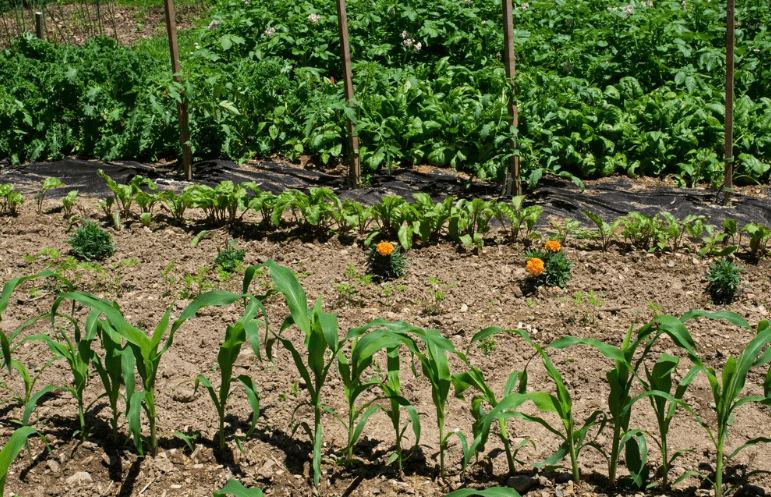
Plants to Avoid Growing Near Sweet Potatoes
A. Competitive Plants
1. Squash and Tomatoes
Squash and tomatoes are not recommended to be grown near sweet potatoes as they are competitive plants and may compete for nutrients, space, and sunlight. It is best to avoid planting these vegetables alongside sweet potatoes to ensure that both crops have the best chance of thriving in your garden. By being mindful of which plants are not compatible with sweet potatoes, you can create a more harmonious and successful growing environment for all of your vegetables.
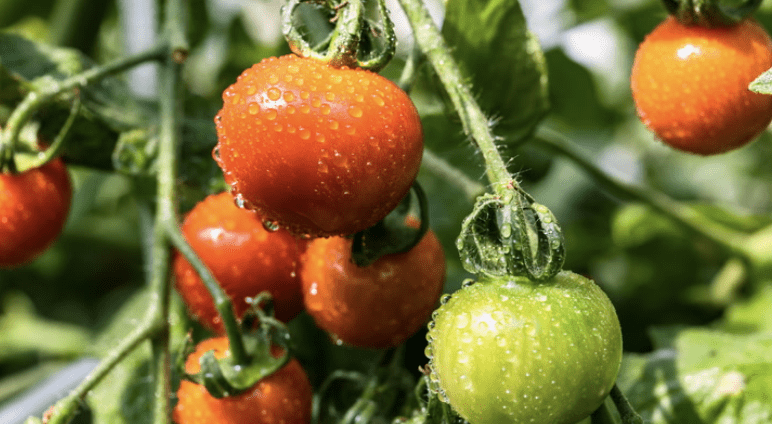
B. Allelopathic Plants
1. Sunflowers and Walnuts
Sunflowers and walnuts are allelopathic plants, meaning they release chemicals that can inhibit the growth of other plants. It is best to avoid growing these plants near sweet potatoes as the chemicals they release may have a negative impact on the growth and development of the sweet potatoes. By being aware of which plants are allelopathic to sweet potatoes, you can ensure that your sweet potato crop has the best chance of thriving without any negative interference from nearby plants.

Practical Tips for Companion Planting with Sweet Potatoes
A. Planning Your Garden Layout
When planning your garden layout, consider the compatibility of plants with sweet potatoes in order to create a successful growing environment. Avoid planting allelopathic plants like sunflowers and walnuts near sweet potatoes to prevent any negative impact on their growth. By being mindful of which plants are not compatible with sweet potatoes, you can promote a harmonious growing environment and increase the overall success of your vegetable garden.
B. Planting Techniques
When planting your sweet potatoes, it is important to space them appropriately to allow for optimal growth and development. Ensure that they are planted in well-drained soil and receive adequate sunlight. Consider planting companion plants such as beans, corn, or peas to help control weeds and provide beneficial nutrients to the soil. Additionally, rotating your crops and practicing good garden hygiene can help prevent the build-up of pests and diseases that may harm your sweet potatoes. By following these planting techniques, you can create a healthy and productive growing environment for your sweet potatoes.
C. Maintenance and Care
Once your sweet potatoes are planted, it’s important to maintain and care for them to ensure a successful harvest. Keep the soil consistently moist, but be careful not to overwater as this can lead to rotting. Mulching around the plants can help retain moisture and control weeds. Fertilize the soil with a balanced fertilizer to provide essential nutrients for growth.
Regularly check for pests and diseases and take proactive measures to prevent and control them. This can include using natural pest control methods or removing infected plants to prevent the spread of disease.
As the sweet potatoes grow, gently loosen the soil around the plants to encourage tuber development. Harvest the sweet potatoes when they have reached the desired size, typically around 90-120 days after planting.
By following these maintenance and care practices, you can ensure that your sweet potatoes thrive and produce a bountiful harvest.
Case Studies and Success Stories
A. Real-Life Examples
One real-life example of successful sweet potato cultivation is the case of a farmer in North Carolina who implemented a proactive approach to pest and disease control. By regularly monitoring the plants and using natural pest control methods, such as introducing beneficial insects, the farmer was able to prevent any major infestations and keep their sweet potato crop healthy.
Another success story comes from a farmer in Louisiana, who focused on soil fertility and nutrient management. By using a balanced fertilizer and regularly testing the soil to ensure it had the necessary nutrients, the farmer was able to achieve a high yield of sweet potatoes with excellent quality.
These examples highlight the importance of proactive pest and disease management, as well as the significance of soil fertility in achieving a successful sweet potato harvest. By following these best practices, farmers can ensure their sweet potatoes thrive and produce a bountiful harvest.
B. Lessons Learned
Companion planting is a great way to benefit your sweet potato garden. One important lesson to learn from successful sweet potato cultivation is the significance of proactive pest and disease control. By regularly monitoring the plants and using natural pest control methods such as introducing beneficial insects, farmers can prevent major infestations and keep their sweet potato crop healthy. Another lesson is the importance of soil fertility and nutrient management. Using a balanced fertilizer and regularly testing the soil for necessary nutrients can lead to a high yield of sweet potatoes with excellent quality. These real-life examples highlight the importance of these practices in achieving a successful sweet potato harvest. By implementing these lessons, gardeners can ensure their sweet potatoes thrive and produce a bountiful harvest. When it comes to soil preparation and fertilization, it’s important to ensure that the soil is well-drained and has good fertility. Adding organic matter such as compost or manure can improve soil structure and provide essential nutrients for the sweet potato plants. Additionally, using a balanced fertilizer with the right amount of nitrogen, phosphorus, and potassium can promote healthy growth and a high yield of sweet potatoes. By paying attention to soil preparation and fertilization, you can set your sweet potato garden up for success.
Additional Tips for a Thriving Garden
A. Soil Preparation and Fertilization
- Test your soil before planting to determine its pH level and nutrient content. This will help you make informed decisions about the type and amount of fertilizer to use.
- Ensure that the soil is well-drained to prevent waterlogging, which can lead to rot and disease in sweet potato plants.
- Incorporate organic matter such as compost or manure into the soil to improve its structure and fertility.
- Use a balanced fertilizer with the right ratio of nitrogen, phosphorus, and potassium to promote healthy growth and a high yield of sweet potatoes.
- Consider using cover crops or green manure to improve soil health and fertility over time.
By following these tips for soil preparation and fertilization, you can create an ideal growing environment for sweet potatoes and increase your chances of a successful harvest.
B. Pest and Disease Management
- It’s important to regularly inspect your sweet potato plants for signs of pests and diseases, such as leaf damage, discoloration, or wilting.
- Practice crop rotation to reduce the risk of pest and disease buildup in the soil. This involves planting different crops in the same area each year to disrupt the life cycles of pests and pathogens.
- Consider using natural pest control methods, such as introducing beneficial insects or using organic pesticides, to manage pest populations without harming the environment.
- Monitor the moisture levels in the soil to prevent conditions that promote disease, such as fungal infections. Avoid overwatering and ensure proper drainage to keep the plants healthy.
- If you notice any signs of pests or diseases, take immediate action to prevent them from spreading. This may include removing and destroying affected plants, applying targeted treatments, or seeking advice from a gardening expert.
By implementing these pest and disease management strategies, you can protect your sweet potato plants and promote a successful and bountiful harvest.
C. Harvesting and Storage
When it comes to harvesting sweet potatoes, timing is crucial. Wait until the foliage has started to yellow and die back before harvesting, typically around 3-4 months after planting. Gently dig up the tubers with a fork or shovel, being careful not to bruise or damage them.
Once harvested, allow the sweet potatoes to cure in a warm, humid environment for about 10-14 days. This process allows the skins to thicken and the sugars to develop, resulting in better flavor and storage qualities. After curing, store the sweet potatoes in a cool, dark, and well-ventilated area to prevent sprouting and spoilage.
By following these harvesting and storage practices, you can ensure that your sweet potato crop stays fresh and delicious for months to come.
In conclusion, companion planting is a great way to maximize the productivity of your sweet potato garden. By planting compatible crops alongside your sweet potatoes, you can improve soil health, deter pests, and increase overall yield. Some great companion plants for sweet potatoes include beans, corn, and spinach. By implementing these companion planting techniques, you can create a thriving and sustainable garden that will provide you with a bountiful harvest. Happy gardening!
Frequently Asked Questions (FAQs)
Some good companion plants for sweet potatoes include beans, corn, and peas. These plants can help improve soil fertility and provide natural pest control.
It’s best to avoid planting sweet potatoes next to other root vegetables like carrots or potatoes, as they may compete for space and nutrients in the soil.
It’s best to avoid planting sweet potatoes near plants from the nightshade family, such as tomatoes, peppers, and eggplant, as they can attract similar pests and diseases.
Companion planting can help improve the overall health and yield of your sweet potato crop. It can also help attract beneficial insects and improve pollination.
es, herbs like oregano, thyme, and sage can make good companion plants for sweet potatoes, as they can help repel pests and attract beneficial insects.
It’s best to leave about 12-18 inches of space between sweet potatoes and their companion plants to allow for adequate growth and airflow.
Plants like fennel and sunflowers can release chemicals that inhibit the growth of nearby plants, so it’s best to avoid planting them near sweet potatoes.
Make sure to provide ample sunlight, well-drained soil, and regular watering for your sweet potato plants. Also, consider rotating your crops to prevent disease and nutrient depletion in the soil.
